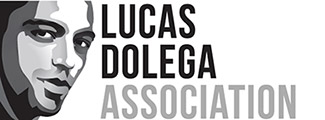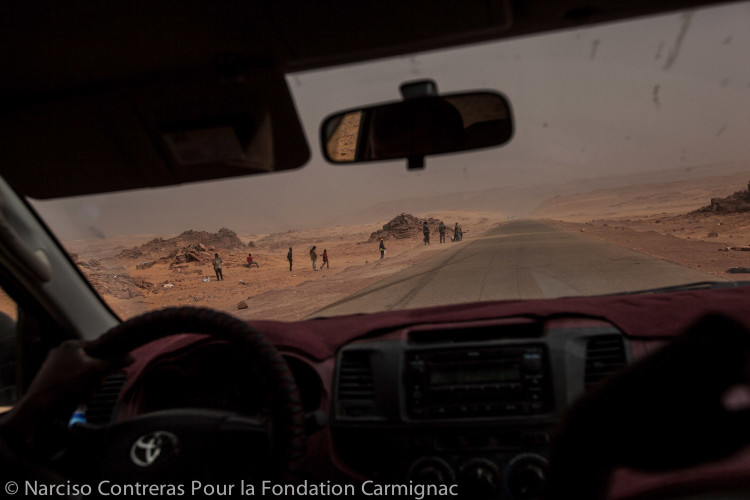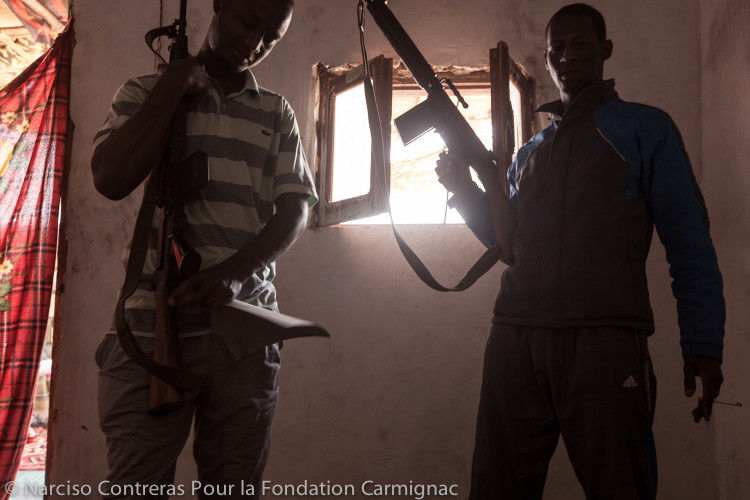Le jury de cette 7e édition a décerné le Prix Lucas Dolega au photojournaliste mexicain Narciso Contreras avec son reportage « Traverser la Libye : le marché aux humains », un travail photographique sur le trafic des migrants africains en Libye.
Le reportage
Biographie
Narciso Contreras est un photojournaliste né à Mexico en 1975. Depuis 2010, il couvre différents sujets en Asie du sud et au Moyen Orient, ce qui l’a amené à se tourner vers les conséquences humanitaires des conflits et des guerres. Son travail veut contribuer à construire une mémoire visuelle du monde dont il est témoin. Ses études en philosophie, photographie et anthropologie visuelle l’ont conduit à vivre et étudier dans un monastère en Inde, tout en travaillant sur les communautés religieuses. Depuis, Narciso a photographié des sujets peu couverts, comme le conflit inter-ethnique en Birmanie, la guerre oubliée au Yemen, ainsi que des événements majeurs comme le conflit à Gaza, le coup d’état en Egypte, la guerre en Syrie et les conflits tribaux en Libye.
Il se concentre en ce moment sur la crise des migrants en Afrique du Nord, qui fait partie d’un projet de documentation au long terme du phénomène mondial de « déplacements de masse ». Le premier chapitre « Libye, le marché aux humains » documente le trafic et les réseaux d’esclavage en Libye.


